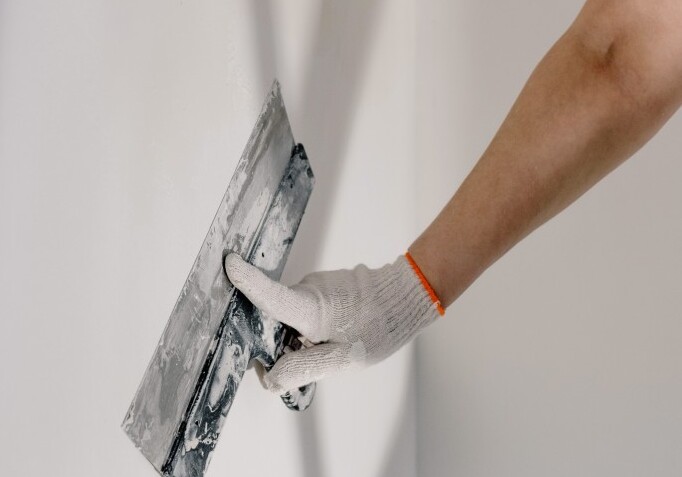Is It Possible To Plaster Onto Timber?
Unfortunately there is no such thing as wood plaster. But, is it possible to plaster over wood? The answer to that question is "yes and no". Yes, if you take the time to prepare the wood first. No, if you try to plaster directly onto it. In short, plaster and wood don't really mix, but there are things you can do to get around the problem.
The team here at R & B Plastering have a wealth of experience in the art of wall plastering. Our commercial clients include schools, housing associations, developers and large domestic properties. Read on to discover how to plaster over wood (without using magic wood plaster)!
The problem with plaster and wood
Plastering contractors have a good understanding of how plaster works. One of the main things to remember is that plaster doesn't stick well to certain surfaces. Unfortunately, wood is one of them. The reason for this is that wood is generally smooth, and there's nothing for the plaster to grip onto. Plaster needs a 'key', and will stick much better to rougher, more textured surfaces. Even if you got plaster to stick to wood, temperature and humidity would cause a problem. Wood expands and contracts in hot and cold temperatures, and plaster isn't flexible enough to withstand that. This could cause cracks, and patches of plaster could even fall off.
Plastering stud walls the traditional way
When you're wall plastering a stud partition that's been in-filled with wood, you need to provide a key for the plaster. A traditional way is to chop or score the wood to make the surface rougher. However, this doesn't always work, and is not recommended unless undertaken by a professional contractor. Another traditional method is to mix animal hair in with the plaster, which makes it stronger and more adhesive. This was often used in conjunction with wooden laths. Again, we would recommend a professional contractor for this process.
Expanded metal lath
The most effective way of plastering stud walls finished in wood, is to apply expanded metal lath (EML). EML mesh is available in sheets in various shapes and sizes. When it's fixed to a timber surface the mesh provides a stable key for the plaster to grip onto. This will stop the plaster cracking if there's any movement in the wood. EML can be fixed with nails, screws or staples, though these should be galvanised to prevent rusting. Corner strips are also available to ensure straight edges and accurate plastered corners.
Using plasterboard
Another way of plastering a wooden partition is to re-board it (or board over it) using plasterboard. The surface of plasterboard is perfectly suited to plaster, and is easily fixed in place using plasterboard nails or screws. In addition, plasterboard joint tape should be used on the joints to prevent cracking.
Here at R & B Plastering, we're happy to share our knowledge and expertise with our commercial customers. If you're looking for professional contractors to work on your next wall plastering project, please get in touch.


